Aaron Liepe P40 Pilot
China Air Task Force
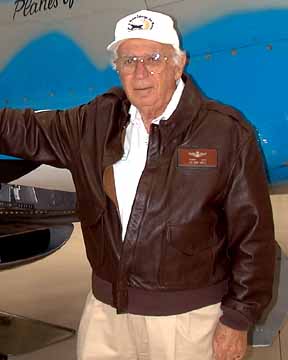
Webmaster: When were you born?
September 16, 1919
Webmaster: Where was that?
Dubuque, Iowa
Webmaster: You grew up in Dubuque?
Yes, through high school and part of my college was at the University of Dubuque.
Webmaster: Had you graduated by the time war started?
No, but I had the two year minimum required [for flight school].
Webmaster: What year was this?
1939
Webmaster: Now you are out of school and there is a war going on in Europe but not in America. At the time did you go into the military?
No, there was a friend from our home town, who was several years older, and who had gotten his commission as a pilot in the Air Corps. One day in the Spring of 1939, he and one of his buddies flew over town in formation, flying their blue and yellow P-26's. We watched them with dreamy eyes. About the same time, the Civilian Pilot Training Program (CPTP) was active. Two of my friends and I decided this was one way for us to learn to fly. We enrolled in the local program and received our Private Pilots License through this program.
We got the flying-bug and wanted to fly bigger and better airplanes. We didn't have the money to buy time, so we decided the quick and easy way was to join the Flying Cadet program. We applied in late 1939. We completed the paperwork and we all met the requirements. Finally, in 1940, we got notice that were accepted for the flight training program. It took the better part of a year to get our acceptance. This didn't give us our appointment, it just said that we were qualified for appointment. Finally, in early 1941, all three of us got our appointments to a civilian contract school, Grider Field, Pine Bluff, Arkansas. This was on of the new civilian schools being developed for Air Corps flight training. We were to be the second class to train at Grider Field.
Webmaster: When you finally got that appointment, was that the point where you had an obligation to the US military?
Yes, we were instructed to report to Fort Des Moines, Iowa, for our physical exam and induction.
Webmaster: What was your Primary Trainer?
We trained in the Fairchild PT-19
Webmaster: Did everyone have prior flight experience?
Most of us did have CPTP training. This is probably the reason we had a higher completion ratio than usual. Up until that time, the wash-out ratio was as high as 70-80%. We had a 50% completion ratio.
Webmaster: Now we are in the summer of 1941 and you are committed to the military. Did you, or your friends, have thoughts about the US ever getting into combat, knowing what was going on in Europe and Asia?
At that time, I think we were probably no more knowledgeable than the general public. There, of course, was a lot of talk about it. The theory was that if we went to war with Japan, we would send over a few bombers and knock them out overnight. I don't think that anyone took it anymore seriously than what appeared to be Washington's position.
Webmaster: What was your advanced trainer and when did you complete your training?
We. trained in the famous AT-6. We had a very unusual ending to our flight training. We finished our flying training on Thursday and had only one more flight, planned for the following Tuesday, to complete before our graduation exercise and receiving our commission as Second Lieutenants. There were other factors that were to come into play.
Thursday night began with party night at Brooks Field where one of the our friends finished his training. Then Friday night we celebrated at Kelly Field where the other two of us finished our training. Of course, we three, who started out together and now were finishing up at the same time, had to celebrate together at each of the graduating parties. Then on Saturday night, everyone from both training schools had to celebrate together at the Cadet Club in the Gunter Hotel in San Antonio. In those days cadets were known to take just a wee bit of a nip, so we were all pretty well strung out at the end of these three parties. We were still recovering at the hotel on Sunday morning when an MP Sergeant came in and told us to return to the base--Pearl Harbor has been bombed!!!
We all told the Sarge - "Go away, don't bother us". About a half hour later he came back and said, "you will go back!!"
Our actual graduation was on the following Thursday. So, you can see, our actual graduation present was World War II.
Webmaster: You got your wings at graduation. At what point were you assigned to your combat unit?
You have to remember that when Pearl Harbor was bombed, the whole military went into a hysterical state of mind. All of our initial assignments had been published but had not been given to us. They were immediately canceled and we were held in a pool at Kelly Field awaiting further orders. Initially, most of us were to go to multi-engine units. I was scheduled for B-24 training in Louisiana. The final analysis was that most of us went to fighter units.
My first assignment was to the 8th Pursuit Group at Mitchell Field, New York. By the time I got to Mitchell, the 8th Pursuit Group had shipped out for California and overseas duty. No one at Mitchell knew what to do with us, so again, we were placed in a pool at Mitchell awaiting further assignment. Finally, out of the 8th Pursuit Group, two new Pursuit Groups were formed and those of us in the pool were assigned to units of these groups. I was assigned to the 60th Pursuit Squadron, 33rd Pursuit Group, at Bolling Field, Washington, D.C., with Group headquarters in Philadelphia. It was with this unit that I transitioned into P-40's. We checked out at the Philadelphia Municipal Airport during the middle of January 1942.
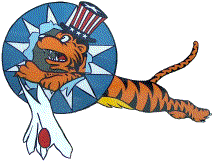 Webmaster: The P-40A or B?
Webmaster: The P-40A or B?
We initially had B and C models. A short time later we began getting E models.
Webmaster: - How many hours did you have in the P-40 before you were sent overseas?
I'm not absolutely sure but I know it was approximately 50 hours.
Webmaster: That's not very much. And so at this point you are on an aircraft carrier headed for Africa. How many P-40s on that carrier?
There were 68. All the planes were taken out of active training units. Something that few people realize was the state of defense and preparedness we had at that time. There were two Pursuit Groups along the east coast. One of these Groups was headquartered in Boston, and the other Group was headquartered in Philadelphia. You have to backup and take a look at these areas. We are talking about the area from Boston, New York City, Philadelphia, Baltimore, Washington, D.C., and Norfolk, VA. Look at the cities, population centers and navy bases that were depending on just six pursuit squadrons for protection. Both of these groups were newly formed. They had a cadre of experienced pilots, but most of the pilots were inexperienced and just out of flying schools, as I was.
When this group of 68 P-40s were gathered to go aboard the carrier, it took all the P-40s that were available from these two groups, and we still had to go to the factory for an additional 12 planes. Most of the P-40s had been used for training and had many flying hours on them. These were the planes we were going off to war with.
Webmaster: What carrier was it?
We were aboard the USS Ranger. The Ranger was the first carrier built from the keel-up as an aircraft carrier and was built in 1933.
Webmaster: Tbis was April 1942. Where did you depart from?
We departed from Groton, Connecticut. I want to digress a bit to when I was transitioning into the P-40 at Bolling Field, Washington, D.C. Anacosta was the naval airfield adjacent to Bolling, but separated by a drainage ditch. You could have taxied between them except for this ditch. Our squadron got a call to take a P-40 over to Anacosta to work with some Navy people. Since I was ahead on my training, our Operations Officer asked me to take a plane to meet with them and do whatever they wanted me to do with the P-40.
When I taxied up to the ramp, I was greeted by three Navy Captain pilots. That was a lot of rank considering that the commander of our group was a Major, and I was a Second Lieutenant just out of flying school. They wanted me to check them out in the P-40, and asked a whole lot of questions about the P-40. Each one, in turn, took the P-40 and flew around the field for a few minutes, and then, they asked me to return the next day. On the second day, I was asked to work on short field take-off with varying flap settings. They did the same thing. On the third day, we continued with flags 800 feet down the runway. They wanted to try and get the plane off the runway within that distance. The average distance for take-off was charted, with the average being approximately 850 feet. Maybe, one out of ten were within the 800 feet. A short time later, our squadron received a request for volunteers for a joint venture with the Navy.
In early April, we were sent to Groton, Connecticut, and put aboard the USS Ranger. As each of us went aboard the carrier, we immediately went to the flight deck to see the length of the deck. It was 790 feet.
We were not worried about taking off of the carrier because we had all practiced the 800' take-off, and with the added headwind created by the carrier, It didn't' seem like a difficult task. A week later they gathered us together in the wardroom and we were told that we would have on-half of the flight deck for take-off
Webmaster: That would be 400'?
Yes, for safety reasons, they wouldn't let us start from behind the island.
Webmaster: You obviously were able to get off in that short distance with the Ranger steaming into the wind. When you took-off, you went to Accra on the Gold Coast (Ghana) of Africa?
Fortunately, we all did get off. We had an interesting experience when we reached Accra. Lt. Col. James (Jimmy) Doolittle was returning from his Tokyo raid and had gotten as far as Accra. He invited all of us to have dinner with him. He was interested in sharing experiences with others who had taken off from a aircraft carrier. To inexperienced Second Lieutenants, it was quite a privilege and honor to spend the time with him and hear about his raid on Japan.
From Accra, we continued on across central Africa to Cairo, through the Middle East, to Bahran Island, and then to Karachi, India.
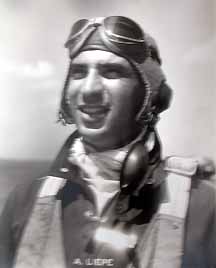
Webmaster: Your destination was Kunming?
No, we were not apart of any organization at that time. We joined the 51st Fighter Group that had left the states early in January. Their planes were aboard the aircraft carrier Langley that was sunk on it's way to Java. All of the 51st Group crews were aboard a troop ship. After the Langley was sunk, the troop ship was first sent to Australia and then on to Karachi, India. We brought the planes and additional pilots to join with them in Karachi.
There were three squadrons in this Group. I was assigned to the 16th Fighter Squadron. One squadron was to go to China and replace the American Volunteer Group (the original Flying Tigers) when they were to disband on July 4, 1942. The story goes that the three squadron commanders flipped a coin to see which squadron would go to China. The 16th won or lost, depending upon how you looked at it. We were detached from the 51st Group and attached to the 23rd Group. The 23rd Group was a paper organization being formed in the field to take over from the AVG. I was told that when we arrived in China, including the airplanes we brought with us, there were 40 flyable P-40s in China--we brought 24 with us.
Webmaster: When did you fly into China?
June of 1942. We became the China Air Task Force (CATF) which came into being on July 4, 1942, the day the AVG ceased to exist.
Webmaster: The China Air Task Force was a military force, why wasn't it part of the 14th Air Force then?
The l4th Air Force didn't exist. We were part of the 10th Air Force in India, commanded by Brigadier General Bissell. Chennault had been a Colonel in the AVG. When he was re-commissioned in the US Air Corps, he was promoted to Brigadier General one day later than General Bissell. Because of this, Bissell outranked Chennault. Of course, the great bitterness and contention between these two created significant problems to the extent that we were not getting the supplies that we were supposed to get.
The China Air Task Force was on operating unit under the 10th Air Force thus giving Chennault some limited autonomy, but only loosely so. There was a lot of infighting over control of the CATF. An example of this is the following:
We were in the eastern part of China, actively engaging the Japanese in the Canton Area and up along the Yangtze River. We were flying some really interesting missions interdicting the Japanese shipping. According to Japanese records available at the end of the war, we were tying up as much as 25% of the Japanese Air Force. General Chennault was ordered by General Bissell to bring back all of his units to attack an airfield in Burma. Our intelligence told us that there was nothing at this target, but we were ordered to attack this target. The end result was that we bombed and strafed an airfield that was totally empty. With the limited gasoline available to us, it depleted our supply very quickly.
It was obvious that, with this contention between Bissell and Chennault, Chennault needed to be independent. Thus the 14th Air Force was created with Chennault as the Commanding General. This completely separated Chennault from Bissel except for one thing.
Webmaster: What was that?
Chennault's supplies had to come over the hump from India and Bissell had some influence over those supplies. I am not sure what the chain of command was between the 10th and the Air Transport Command, but Bissell was in a position to influence it. If the 10th Air Force didn't control the actual supplies, they did control the airfields. It was rough from the standpoint of getting what we needed.
Webmaster: Wasn't there a meeting between Bissell and Chennault where Bissell waited and arrived late so that Chennault had to arrive first and be put in a position of waiting for Bissell?
This took place around the 10th of March 1943. Bissell came into this small field and met with Chennault. I believe this is when the actual transfer of command to the 14th Air Force took place. The pilot that flew Bissell said that Bissell would not allow him to land until Chennault was on the ground. The story was that Chennault would not allow Bissell to fly in one of his airplanes but had to be in one of Chennault's planes.
The location of this small field was in a deep valley. In order to land a C-47 on this field, it was necessary to put the aircraft into a steep slip. When the back door to the plane was opened, General Bissell was covered with crackers and other junk that was tossed around while making the approach to land.
Webmaster: At this point you were in the 14th Air Force, 23 Fighter Group, 16th Fighter Squadron?
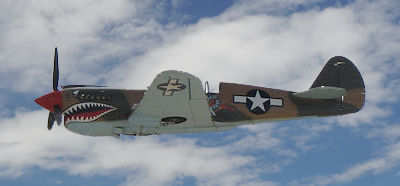
Actually, we were the 16th Fighter Squadron, attached to the 23rd Fighter Group, l4th Air Force.
Webmaster: When you first reached China in June '42, where were you assigned?
We were assigned to a base outside of Chungking called Pelshiyl, where Chennault had his headquarters. Part of our squadron was in Kweilin and the other in Kunming. We were pretty well split up by flights.
Webmaster: How many flights in a squadron?
There were three flights of 8 aircraft in each squadron.
Webmaster: Most of the time you were there, you were in Chungking?
You have to understand that in China at that time there were very few of us. We had flights that were scattered all over. In order to make up for these deficiencies, we would go over to Kweilin and fly missions, and then five or six of us might go to Hengyang or Lingling and fly missions. We never really had squadron strength. We operated in small groups scattered over a wide area, only our administrative people would remain in what might be termed our home base.
In early July after the AVG disbanded, there were several of the AVG members who agreed to stay and additional two weeks during a period of transition from the AVG to the China Air Task Force. Unfortunately, during this period, two of these members were killed in action. On our early missions, members of the AVG acted as our leaders because our squadron commander and flight leaders had no more combat experience than the rest of us. These AVG members were leading us on our initial missions so that we could get familiar with the area, as well as gaining our initial combat experience. Among those who were leading these first missions there were several who were re-commissioned in the Air Corps and remained with the 23rd Group as Squadron Commanders. Two of these were Tex Hill and Ed Rector. On my first mission, escorting B-25s to Canton, we were led by Tex Hill.
From May 1943 until I returned to the states in late October 1943, arriving in early November, I spent almost all of my time in the eastern sector of China. During this same time, except for a few of us, the rest of the squadron was in the western sector at Yunnanyi, middle of the Himilayas.
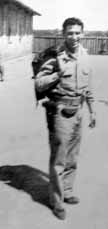
Webmaster: Where did you go when you left China in late October, 1943?
I went home for several weeks of leave, then I was assigned to a P-47 transition training unit at Baton Rouge, Louisiana, which immediately moved to Abiline, Texas, where I headed up the gunnery training program.
Webmaster: Regarding your flight hours, you told me when you boarded the Ranger, you had approximately 50 flight hours in the P-40. With that and approximately 80 additional hours flying across Africa to India and on to China, you had a total of approximately 130 hours when you flew with Tex Hill on that first raid? I recall you saying you owe a lot to Tex Hill?
How could you have a better teacher? Tex was a squadron commander with the AVG, commanded the 75th Fighter Squadron, and finally 23rd Fighter Group commander. With more than 18 confirmed victories, he was one of the leading aces of World War II.
Webmaster: Entering your first combat, you had approximately 130 P-40 flying hours. When you left China, how many hours did you have?
My guess would be approximately 530 additional hours for approximately 710 total hours.
Webmaster: Were most of your missions in escort and air to air?
We were a full service fighter unit. We escorted bombers, strafed, dive bombed, skip bombed, flew reconnaissance missions, fought air to air and any other activity that we were called upon to do.
Webmaster: Did they send bombers over your airfields very much?
I don't know what "very much" means. In the beginning we were frequently raided, but as time went on, the frequency diminished.
Webmaster: Were these twin engine Bettys?
Yes, almost always escorted by fighters. We considered most of them to be Zeros, but we also saw Oscars. The first plane I shot down was over Yunnanyl (Western China). I cannot understand why that rascal was there. Bob Liles and I were out on patrol along the Salween River and on our way back to base when we saw this formation of Japanese fighters and bombers coming in. We didn't have enough fuel to make an attack so we alerted the rest of the squadron, and we circled around until the enemy passed over the field. As soon as they dropped their bombs and got out of the area, we went in to land and refuel. Bob ran out of fuel on the ramp, and I ran out on my landing roll out. As soon as we got refueled, each of us got back into the air. As soon as I was refueled, l climbed up to about 16,000' and was headed back in the direction of the departing enemy formation hoping to catch a straggler. One fighter was coming my way and I got close enough to see the red ball on his plane. I made a couple passes and he didn't have a chance.
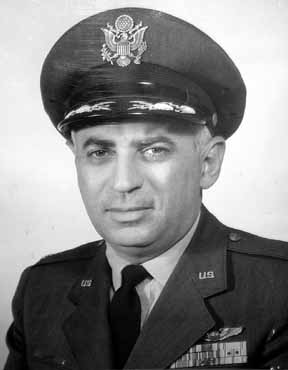
Webmaster: In October when you left, what were you credited with?
I had three confirmed victories and several probables.
Webmaster: Were these fighters?
No, two were Bettys and one fighter.
Webmaster: Getting back to your days after China when you were training in the P-47s, did you do that to the end of the war?
No, in April 1945, 1 was transferred to a P-63 squadron on a B-29 base. We were flying simulated attacks on the B-29s to give their gunners experience shooting us down with their gun cameras.
Webmaster: You are doing this through VE day and up until VJ day. Where were you on that August 15, 1945 when the Japanese surrendered?
I was in Pyote, Texas with the P-63 squadron.
Webmaster: After that did you stay in the service?
I stayed on active duty until March 1948.
Webmaster: What rank did you attain?
I left active duty as a Major. Later, in the Reserves, I was promoted to Lt. Col and retired from the Reserves after 23 years combined active and reserve duty.
Webmaster: Thank you, Aaron, for your time and your service to our country.
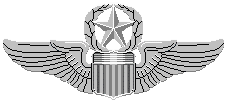


|